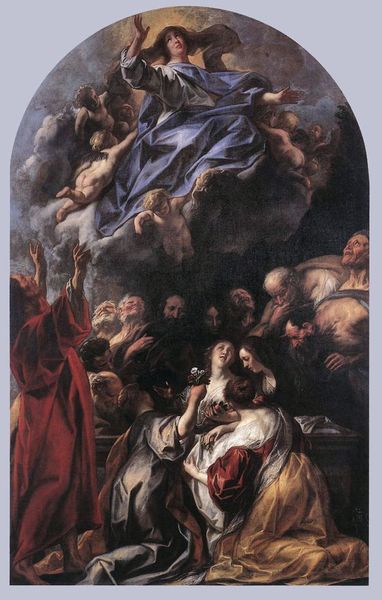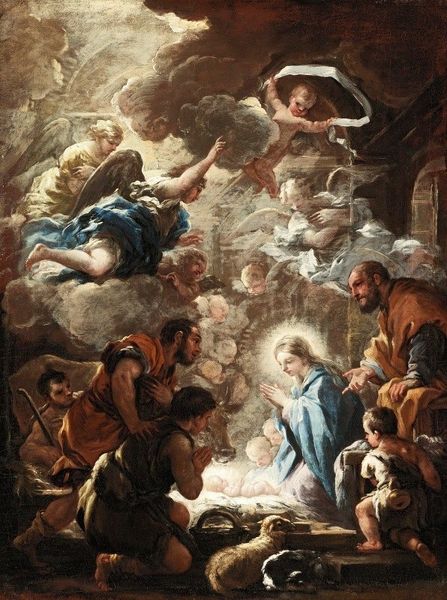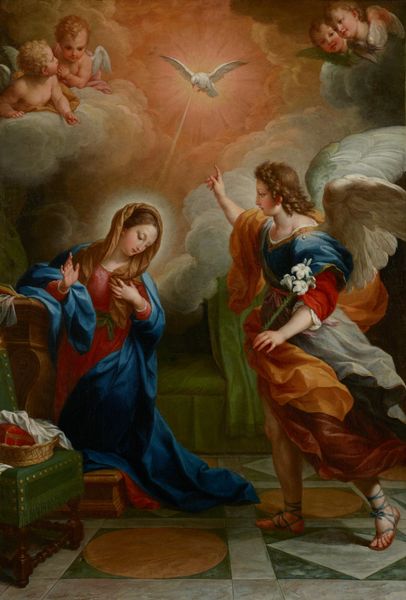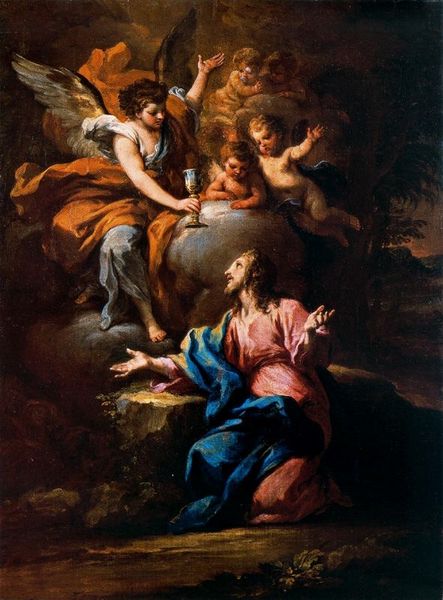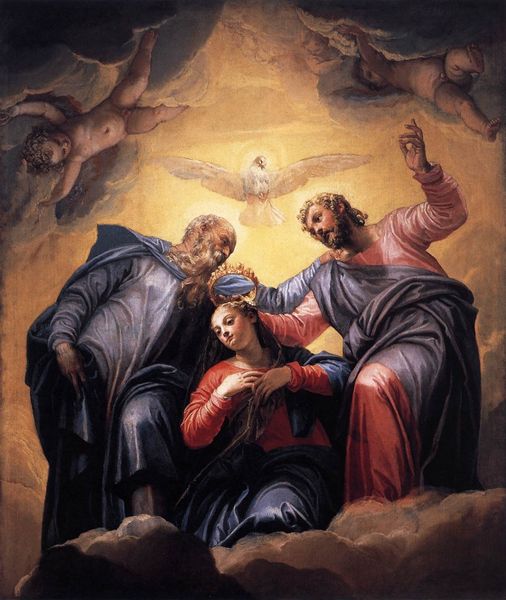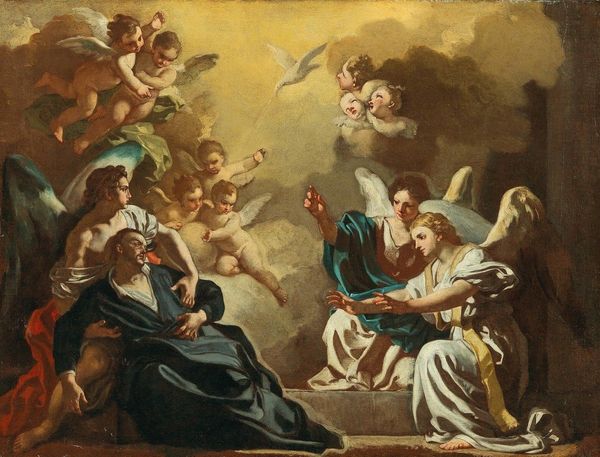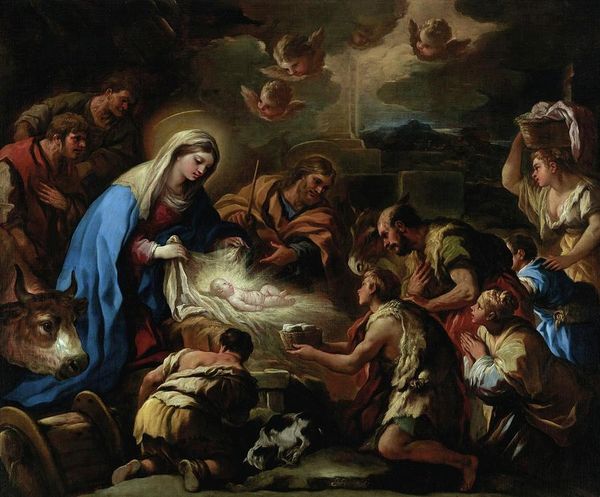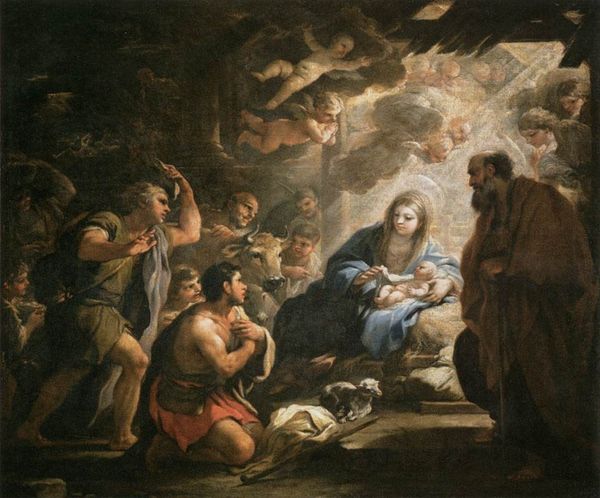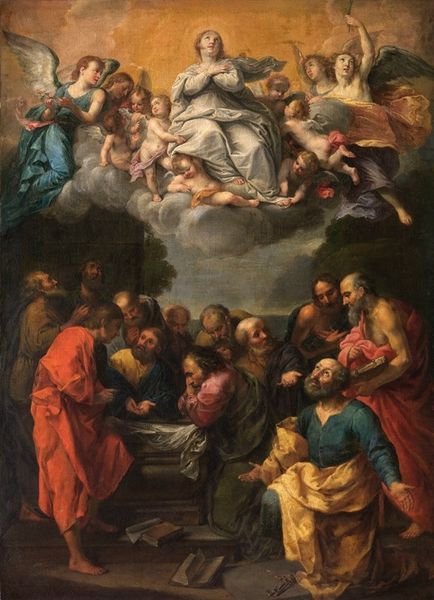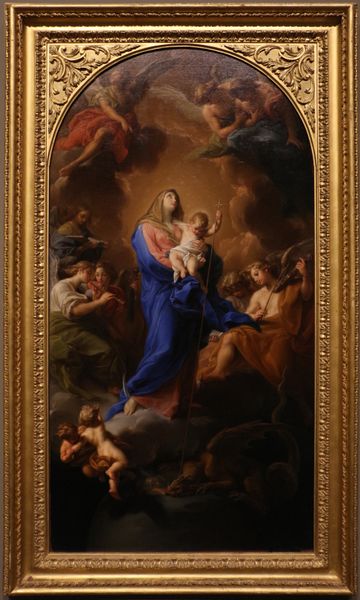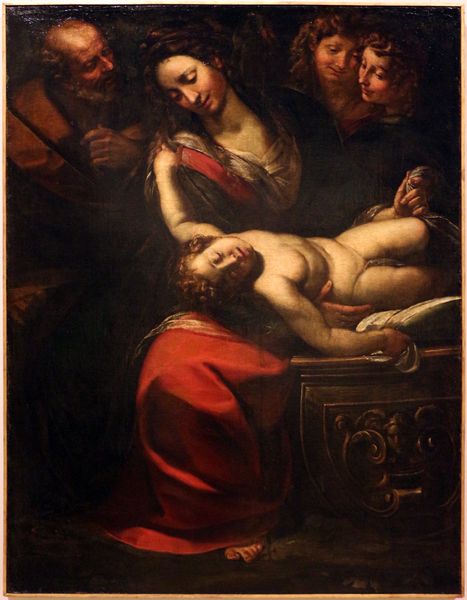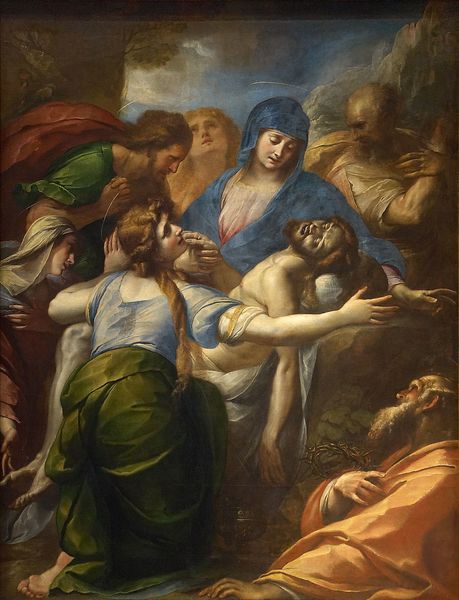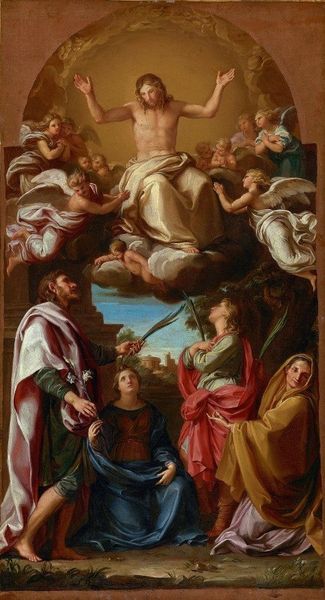
painting, oil-paint, fresco
#
allegory
#
narrative-art
#
baroque
#
painting
#
oil-paint
#
landscape
#
figuration
#
fresco
#
christianity
#
history-painting
#
rococo
#
christ
Copyright: Public domain
Editor: We're looking at "Annunciazione" by Pompeo Batoni, likely an oil painting, though a fresco is mentioned in the tags. It's a depiction of the Annunciation. The colour palette feels muted, almost earthy. What are your first impressions, and what elements stand out to you most? Curator: The most immediate element is the labour involved. Think about the pigment. Where did these colours come from? What social conditions enabled Batoni to access these materials, especially those striking blues and reds? And who prepared the surface, ground the pigments, constructed the frame? This piece whispers of the complex, collaborative nature of art production. Editor: That's fascinating. I hadn’t considered the physical and social labor involved. Does this materiality shift the focus of the scene itself, say from Mary’s devotion to the systems surrounding her? Curator: Precisely! Consider the textile rendering – the drapes of the angel’s robe or Mary’s gown. Each fold signifies not just skill, but the value placed on fabrics themselves. Were these garments new, used, luxurious, commonplace? The narrative becomes secondary to the commentary on production, consumption, and value embedded in the textures of everyday life represented. Editor: I see what you mean. So, instead of purely religious symbolism, the piece prompts questions about economic and material realities of the time. I hadn't thought about the social implications of making art like this before! Thank you. Curator: Indeed! We've moved beyond the surface and seen the complex interplay of labour, materials, and cultural context. Every brushstroke is loaded with material meaning.
Comments
No comments
Be the first to comment and join the conversation on the ultimate creative platform.
